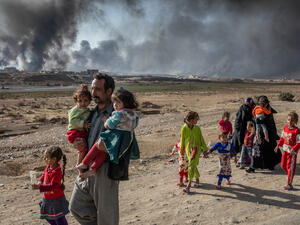Refugee Statistics: provisional 2000 data released
Refugee Statistics: provisional 2000 data released
We are distributing copies of our latest global refugee statistics, based on provisional data. The final statistics, which are not expected to differ much from these, will be issued in July. These provisional statistics show that at the start of 2001, the number of people "of concern" to UNHCR was 21.1 million, or one out of every 284 persons on Earth. This is compared with a January 1, 2000, figure of 22.3 million. The overall decrease of slightly more than 1 million people "of concern" to UNHCR was largely the result of a change in the counting method. Until the last reporting period, the number of refugees and IDPs going home, or "returnees," was counted over a two-year time span because of the lengthy time it often takes civilians to re-adjust. Under the new counting method, however, the statistics reflect the number of persons going home during a 12-month period.
There were several significant changes during the 12-month reporting period. The largest refugee population increase was in Pakistan where the number of Afghan refugees rose by an estimated 800,000 persons, including civilians living outside established camps. Afghans constitute the largest single refugee population of concern to UNHCR, with an estimated 3.6 million people - or 30 percent of the global refugee population. Civilians from the central African state of Burundi constitute the second largest group, with 567,000 refugees living mainly in Tanzania. Iraqis comprise the third largest population, 497,400 people living mainly in Iran. Asia as a whole has the greatest number of persons "of concern," with nearly 8.5 million, followed by Europe with 5.6 million and Africa with 5.3 million people.








